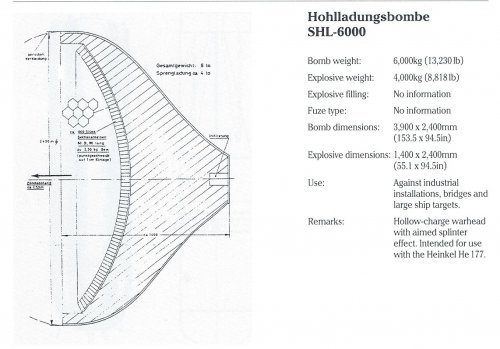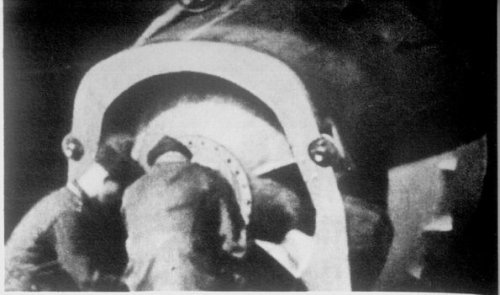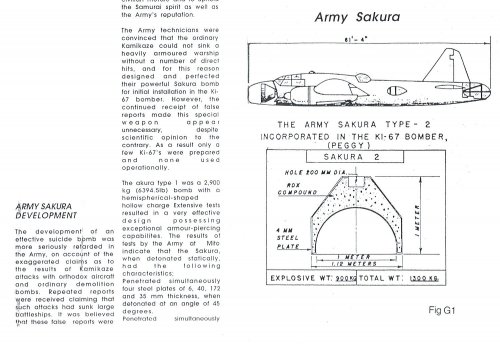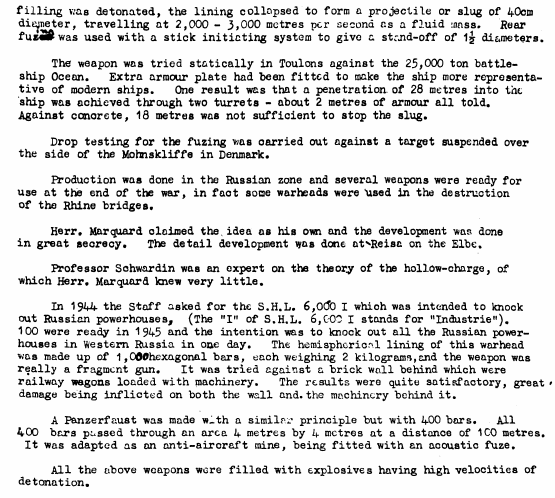Greetings
Here's what Wolfgang Fleischer's excellent book "Deutsche Abwurfmunition bis 1945" (roughly: "German air-dropped munitions until 1945"), ISBN 3-613-02286-9, has to say (My translation. Words in [..] have been added by me for clarity):
"A further development [of the SHL-4000, for the Ju-88 Mistel] was the SHL-6000, intended for use with an enlarged Mistel composite (Heinkel He 177 and Focke-Wulf Fw 190). There were plans to use the SHL-6000 during Operation Eisenhammer ["Operation Iron Hammer"], an attack on the power stations of the Russian armaments industry [somewhere beyond the Urals]"
The data for the SHL-6000 given in the book's appendix are similar to those posted here by Mr. Miranda.
In the Mistel composites, the warheads generally replaced the entire forward crew area of the lower (bomber) component, as shown in the image in Moin1900's Cape Hobby link
As a side note, I would suppose "SHL" is short for "Sonder-HohlLadung" ("Special Hollow Charge").
Regards & all,
Thomas L. Nielsen
Denmark








